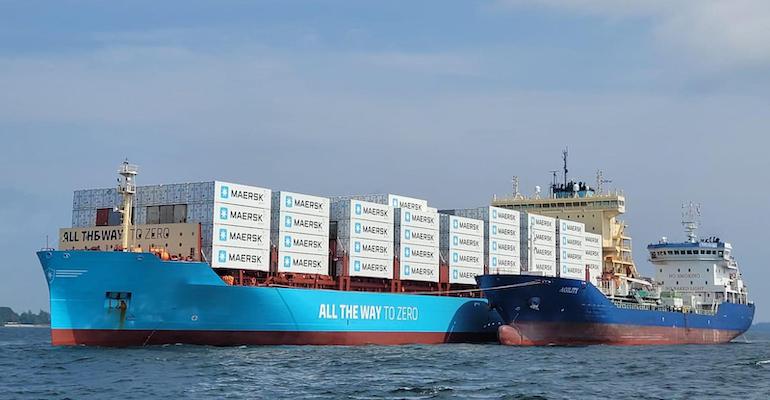The figure far exceeds the 14 ship contracts with LNG as fuel that were placed over the month and illustrates that methanol as fuel is becoming an increasingly popular option.
There are now 204 methanol-fuelled ships on order, still a long way behind the 949 contracts for LNG-fuelled vessels, excluding LNG carriers. But the month’s figures indicate that the gap may be closing.
DNV’s Principal Consultancy in the Maritime Advisory business, Martin Wold, said: “Beating last month's record by a solid margin, orders for methanol-powered vessels have now jumped past the 200 mark. The significant number of new confirmed orders and retrofits for methanol coincides with the delivery of the world’s first methanol-fuelled container vessel and the signing of the first bunker supply agreement for green methanol for ships.”
Earlier this year, the classification society’s Business Development Manager, Christos Chryssakis, said that methanol is neither better nor worse than LNG but it has different properties which make it attractive for certain ship types. Capital costs are lower because there is no need for pressurisation or cryogenic tanks and fuel supply systems. But the fuel does require about two-and-a-half times more space than oil.
However, most of the world’s methanol today is ‘brown’ or ‘grey’, produced from coal or natural gas, neither of which reduce well-to-wake carbon emissions. Chryssakis estimates that fossil methanol actually increases the lifecycle of greenhouse gas emissions by about 10% compared with marine gasoil. LNG, on the other hand, cuts such emissions by 10-20% depending on engine technology, the consultant said.
Today’s IMO regulations only cover tank-to-propeller emissions and therefore give a favourable skew to methanol performance. However, new regulations in Europe, such as the bloc’s FuelEU Maritime initiative due to enter force in 2025, will penalise fossil fuels on the basis of well-to-wake emissions. Chryssakis also notes that green methanol is not available in significant quantities today.
However, Maersk’s new feeder ship, Laura Maersk, set out on her maiden voyage from Ulsan to Copenhagen last month, fuelled by green methanol. The vessel was bunkered with OCI HyFuels ISCC-certified green methanol with supplies of the green fuel available en route. Odfjell SE, which helped to arrange the supply of green methanol in Ulsan, is the transport and storage partner.
Copyright © 2024. All rights reserved. Seatrade, a trading name of Informa Markets (UK) Limited.
Add Seatrade Maritime News to your Google News feed.  |

